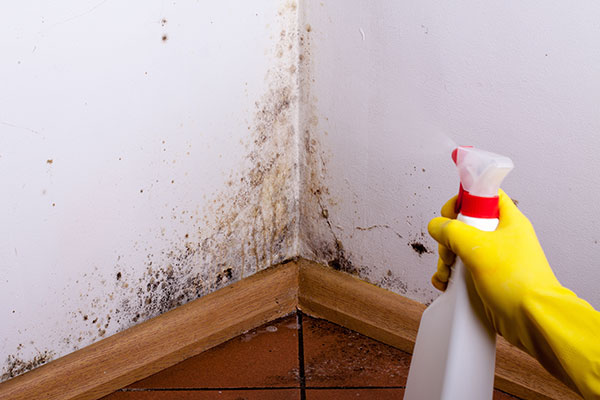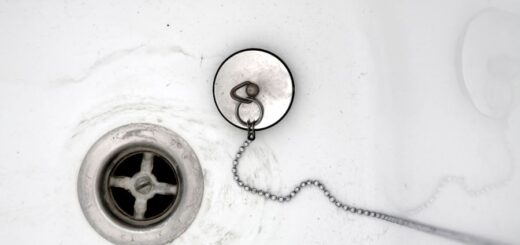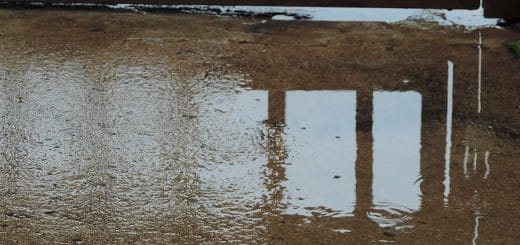Mold Guide for Homeowners
MoldMold is a type of fungus that grows in damp or humid conditi... More is a common problem for homeowners around the world – a troublesome bane that can not only compromise the integrity of a home, but may also affect the health of its inhabitants. Nonetheless, many people are not well aware of the numerous dangers of moldMold is a type of fungus that grows in damp or humid conditi... More, the most effective methods for its preventionPrevention refers to actions taken to reduce the likelihood ... More, and the best ways to get rid of the harmful fungus once and for all.
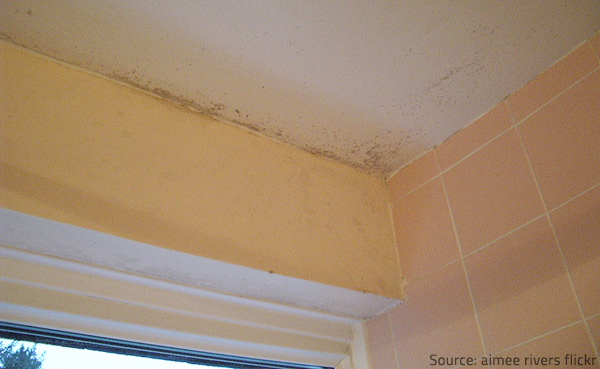
About 45% of the homes in the US have substantial moldMold is a type of fungus that grows in damp or humid conditi... More problems.
Knowing such important facts and proven preventionPrevention refers to actions taken to reduce the likelihood ... More techniques, however, can make a big difference in the struggle against moldMold is a type of fungus that grows in damp or humid conditi... More – it can help people better protect theirs and their families’ health, as well as the soundness and value of their homes.
Following the proven moldMold is a type of fungus that grows in damp or humid conditi... More guidelines below is certain to save you plenty of troubles when dealing with moldMold is a type of fungus that grows in damp or humid conditi... More in your home:
What Is Mold?
MoldMold is a type of fungus that grows in damp or humid conditi... More is a fungus that causes biodegradation of natural materials – its purpose in the eco-system is to break down dead organic matter, so that it can be “recycled” into the environment. Once the moldMold is a type of fungus that grows in damp or humid conditi... More sporesSpores are microscopic reproductive units of fungi or mold t... More get indoors, however, they can quickly affect large areas of the property and cause severe structural damage and serious health problems.
Mold growth
There are three basic requirements for moldMold is a type of fungus that grows in damp or humid conditi... More to develop – moldMold is a type of fungus that grows in damp or humid conditi... More sporesSpores are microscopic reproductive units of fungi or mold t... More, organic food, and moisture:
- MoldMold is a type of fungus that grows in damp or humid conditi... More sporesSpores are microscopic reproductive units of fungi or mold t... More exist everywhere in the outdoor environment and can get easily get inside the home (thorough open doors and windows or attached to clothes, shoes, and bags). The greater the concentration of moldMold is a type of fungus that grows in damp or humid conditi... More sporesSpores are microscopic reproductive units of fungi or mold t... More in the indoor air, the greater the chance for a moldMold is a type of fungus that grows in damp or humid conditi... More problem to occur;
- Organic food is available in abundance in the home – wood, leather, fabric, carpet, paper, paint, grout, insulationInsulation is a material used in buildings to reduce the tra... More materials, and other organic household materials provide an ample food source for moldMold is a type of fungus that grows in damp or humid conditi... More, so that it can grow and reproduce easily;
- Moisture can accumulate in the home as a result of floodingFlooding is the overflow or accumulation of water in areas t... More, pipe leaks, condensation, etc. and provide the right conditions for moldMold is a type of fungus that grows in damp or humid conditi... More to start developing. Even high indoor humidityHumidity is the amount of moisture or water vapor present in... More levels can result in moldMold is a type of fungus that grows in damp or humid conditi... More growth.
Common indoor molds
There are over 10,000 species of moldMold is a type of fungus that grows in damp or humid conditi... More but only 5 of them are commonly found indoors:
-
- Alternaria is one of the most allergenic kinds of moldMold is a type of fungus that grows in damp or humid conditi... More and a risk factor for asthma. It does not require much water to grow and can develop on almost any household surface or material. It is usually black, grey, or dark brown in color and has a suede-like texture;
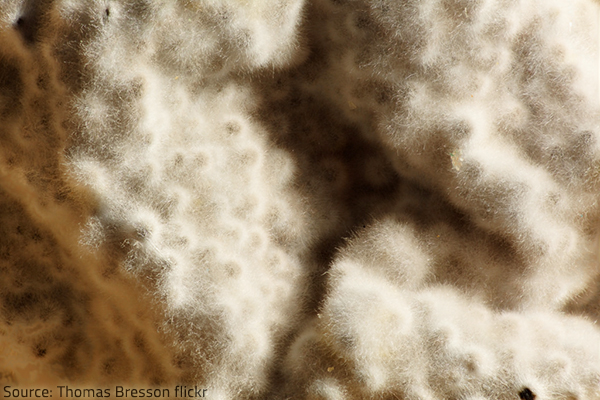
There are five different types of moldMold is a type of fungus that grows in damp or humid conditi... More that thrive in indoor environments.
- Aspergillus thrives in warm, humid climates and appears in grey, brown, green, yellow, or white hues. It can cause respiratory infections and inflammation of the lungs in people with weak immune systems;
- Cladosporium has a characteristic black or olive-green color. It can grow in lower temperatures than other kinds of moldMold is a type of fungus that grows in damp or humid conditi... More and is usually found on cellulose surfaces. Cladosporium moldMold is a type of fungus that grows in damp or humid conditi... More can leadLead is a heavy metal that can be toxic to humans, especiall... More to hay fever, asthma, and infections of the skin, eyes, and sinuses;
- Penicillium has long tentacle-looking structures and appears green or blue in color. It is most often found on carpeting, wallpaper, and insulationInsulation is a material used in buildings to reduce the tra... More;
- StachybotrysStachybotrys is a type of black mold (often called “black ... More chartarum is also known as “black moldMold is a type of fungus that grows in damp or humid conditi... More”, because of its greenish-black color. It produces toxic compounds that can cause severe health problems, such as respiratory problems, asthma attacks, chronic sinus infections, and inflammation of the lungs.
How to Detect Mold in Home
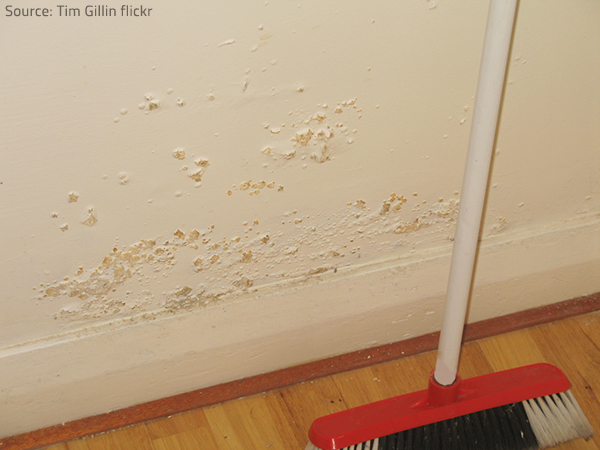
Crumbling plasterPlaster is a building material made of lime, gypsum, or ceme... More and blistering paint are clear signs of moldMold is a type of fungus that grows in damp or humid conditi... More growing inside the wall.
Mold can often remain hidden for a long time before homeowners become aware of the problem – it usually starts growing in very inconspicuous areas of the house (inside walls, on the back side of wallpapers or paneling, on the top side of ceiling tiles, behind leaky appliances, within insulationInsulation is a material used in buildings to reduce the tra... More, inside ductwork, in crawl spaces, etc.) and is only noticed when the sporesSpores are microscopic reproductive units of fungi or mold t... More have already affected large areas of the property and caused considerable structural damage.
Therefore, it is of paramount importance that you learn to recognize the very first signs of moldMold is a type of fungus that grows in damp or humid conditi... More growth in your property and act fast, even on very small amounts of moldMold is a type of fungus that grows in damp or humid conditi... More (one square inch of moldMold is a type of fungus that grows in damp or humid conditi... More can have more than a million sporesSpores are microscopic reproductive units of fungi or mold t... More). If you don’t take quick and efficient measures to fix the problem and get rid of the moldMold is a type of fungus that grows in damp or humid conditi... More sporesSpores are microscopic reproductive units of fungi or mold t... More before they have spread throughout the home, you risk a long, difficult, and expensive mold remediation process, as well as serious health issues.
The detailed moldMold is a type of fungus that grows in damp or humid conditi... More identification guide below will help you detect moldMold is a type of fungus that grows in damp or humid conditi... More in your home as soon as a couple of days after it has started developing. You need to watch out for:
- A musty smell;
- Cracked or peeling paint;
- Discoloration and/or bulging of the walls;
- Cracked or loose tiles;
- A softer, spongy feel of the floor or walls;
- Too many ants in the home (most ants make their nests in moist wood, so their presence in the home may be a sign that moldMold is a type of fungus that grows in damp or humid conditi... More is decomposing the floorboards or is rapidly growing within the walls or the insulationInsulation is a material used in buildings to reduce the tra... More);
- Allergic reactions among the members of your household that have no logical explanation
- Visible black spots on the walls or the ceiling.
If you notice any of these tell-tale signs of moldMold is a type of fungus that grows in damp or humid conditi... More growth in your home, you need to act without delay.
How to Get Rid of Mold
Your first task when you detect moldMold is a type of fungus that grows in damp or humid conditi... More growth in your home is to carefully inspect your property and find the source of excessive moisture that allows moldMold is a type of fungus that grows in damp or humid conditi... More to develop. It may be a leaky pipe or a leaky roof, inadequate air exchange or too much condensation, etc. Either way, you need to fix the problem and remove the source of the moisture, so that the sporesSpores are microscopic reproductive units of fungi or mold t... More cannot continue to reproduce and spread any further. Then, you need to kill the existing moldMold is a type of fungus that grows in damp or humid conditi... More sporesSpores are microscopic reproductive units of fungi or mold t... More and restore the sustained damage.
DIY Mold Removal
If the contaminated area is small, easily accessible, and easy to clean, you can successfully remove moldMold is a type of fungus that grows in damp or humid conditi... More by yourself. Just make sure you:
- Wear personal protection equipment (gloves, goggles, and a respiratory mask) when cleaning up the moldMold is a type of fungus that grows in damp or humid conditi... More;
- Use only quality fungicide sprays – bleach and other household cleaners are not strong enough to eliminate the moldMold is a type of fungus that grows in damp or humid conditi... More sporesSpores are microscopic reproductive units of fungi or mold t... More (they just hinder their development for some time), while paint and lysol can only hide the damage, not repairRepair is the act of fixing or restoring damaged property, m... More it;
- Eliminate all the hidden and dormant sporesSpores are microscopic reproductive units of fungi or mold t... More too – spraying only the visible moldMold is a type of fungus that grows in damp or humid conditi... More patches won’t solve the problem, as the hidden sporesSpores are microscopic reproductive units of fungi or mold t... More will remain and will start growing whenever favorable conditions occur;
- Remove any moist materials and repairRepair is the act of fixing or restoring damaged property, m... More or replace any affected household items and surfaces.
If you have health problems, however, or if the affected area is large and difficult to treat, you are strongly recommended to ask for professional assistance.
Professional Mold Removal
Hiring an experienced mold removal company to take care of your moldMold is a type of fungus that grows in damp or humid conditi... More problem is the right course of action when:
- MoldMold is a type of fungus that grows in damp or humid conditi... More is growing on drywall, wood, or other porousPorous describes a material that contains small openings or ... More surfaces. In this case, the moldMold is a type of fungus that grows in damp or humid conditi... More colony will have already penetrated the material and the only way to eliminate all the moldMold is a type of fungus that grows in damp or humid conditi... More sporesSpores are microscopic reproductive units of fungi or mold t... More will be to replace the contaminated material or take advantage of some specialized mold removal techniques that can only be performed by experienced professionals;
- MoldMold is a type of fungus that grows in damp or humid conditi... More covers large areas of your home. In this case it will be very difficult to get rid of the moldMold is a type of fungus that grows in damp or humid conditi... More sporesSpores are microscopic reproductive units of fungi or mold t... More and the risk to your health will be extremely high;
- MoldMold is a type of fungus that grows in damp or humid conditi... More grows inside the HVAC systems or inside places that are difficult to reach and repairRepair is the act of fixing or restoring damaged property, m... More – professional equipment will be required to remove the moldMold is a type of fungus that grows in damp or humid conditi... More sporesSpores are microscopic reproductive units of fungi or mold t... More from such poorly accessible places;
- You or members of your family are already experiencing moldMold is a type of fungus that grows in damp or humid conditi... More exposure symptoms. In this case you need to get rid of the moldMold is a type of fungus that grows in damp or humid conditi... More as soon and as efficiently as possible (before the associated health problems become more severe).
Mold removal specialists have the extensive experience, advanced equipment, and professional know-how to completely remove moldMold is a type of fungus that grows in damp or humid conditi... More and restore the safe and healthy living conditions in your home. They will discover all the moldMold is a type of fungus that grows in damp or humid conditi... More sporesSpores are microscopic reproductive units of fungi or mold t... More in your property, use advanced equipment and powerful cleaning agents to kill them, remove water-damaged and mold-infested materials, replace drywall and other badly damaged household materials, repairRepair is the act of fixing or restoring damaged property, m... More any sustained damage, disinfect the contaminated area, purify the air, and take efficient precautionary measures to prevent moldMold is a type of fungus that grows in damp or humid conditi... More from reoccurring.
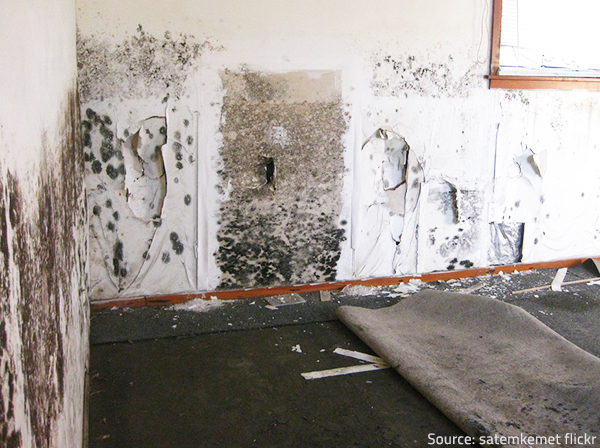
Sometimes, you just can’t do without professional assistance.
Just make sure you hire properly licensed, insured, experienced, and trustworthy moldMold is a type of fungus that grows in damp or humid conditi... More removal professionals for your mold remediationMold remediation is the process of identifying, removing, an... More needs – ask several mold removal companies in your area for moldMold is a type of fungus that grows in damp or humid conditi... More assessment, find out if they use reliable air testing methods, if they have appropriate equipment and quality cleanup products, if they test the air after completing the project (to verify that the moldMold is a type of fungus that grows in damp or humid conditi... More problem has been properly addressed), learn what kind of insurance they have and what kind of services are included in the offer, etc. and choose the mold remediationMold remediation is the process of identifying, removing, an... Moreremediation companyA remediation company is a business specializing in cleaning... More that offers the highest quality services at the most reasonable price. You’ll ensure your peace of mind and the excellent condition of your property.
Once you get rid of moldMold is a type of fungus that grows in damp or humid conditi... More, however, make sure you prevent it from affecting your home ever again.
How to Prevent Mold
As already discussed above, you cannot prevent moldMold is a type of fungus that grows in damp or humid conditi... More sporesSpores are microscopic reproductive units of fungi or mold t... More from entering your home or deprive moldMold is a type of fungus that grows in damp or humid conditi... More of its “food”. Therefore, the only way to prevent mold growth in your home is to control the humidityHumidity is the amount of moisture or water vapor present in... More in the indoor environment and make sure the ambient conditions in your house or apartment are not right for the fungus to develop:
- Ensure proper ventilationVentilation is the process of exchanging or circulating air ... More and good air circulation – keep the windows open when the weather allows it, run exhaust fans in bathrooms and kitchens, keep the air ducts clean and in good condition, etc.;
- Keep indoor humidityHumidity is the amount of moisture or water vapor present in... More levels below 45 percent – use air conditioners and dehumidifiers to control your indoor climate and keep air humidityHumidity is the amount of moisture or water vapor present in... More low;
- Clean, dust, and disinfect household surfaces on a regular basis to prevent the accumulation of dust and dirt on your furniture, carpets, and other household items (it has been found that about 80% of household moldMold is a type of fungus that grows in damp or humid conditi... More grows on dust);
- Remove mold-affected materials to prevent moldMold is a type of fungus that grows in damp or humid conditi... More sporesSpores are microscopic reproductive units of fungi or mold t... More from contaminating other items;
- Inspect your property at least twice a year (as well as after major storms, torrential rains, snow meltdown, etc.) to detect moldMold is a type of fungus that grows in damp or humid conditi... More growth in its early stages and prevent it from spreading;
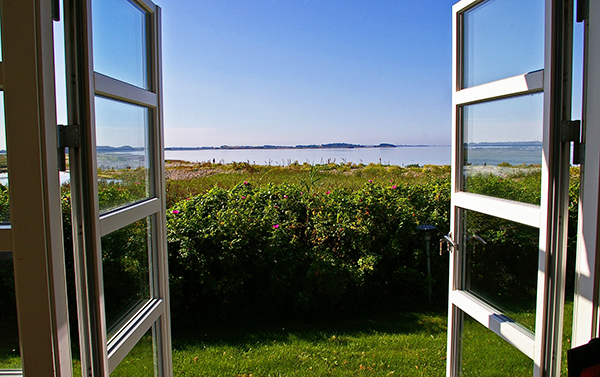
Enjoy the safe, healthy, and mold-free living conditions in your home!
- Keep your property in good repairRepair is the act of fixing or restoring damaged property, m... More – make sure the roof and the chimney are in excellent condition at all times, repairRepair is the act of fixing or restoring damaged property, m... More foundation cracks and fix plumbing leaks without delay, leak-proof doors and windows, keep the gutters clean, keep the basement and the crawl spaces beneath your home dry, make sure the soil around the home is graded so that water flows away from the foundation, etc.;
- Do not let wet items stay inside – don’t hang wet clothes to dry inside, dry everything well before storing it indoors, take wet shoes off at the door, vent appliances that produce moisture to the outside, etc.
Proper moldMold is a type of fungus that grows in damp or humid conditi... More preventionPrevention refers to actions taken to reduce the likelihood ... More will ensure a healthy, mold-free living environment and will save you a lot of money and trouble down the road.










